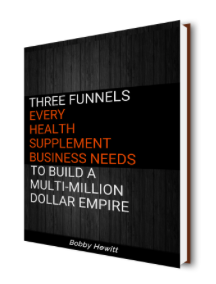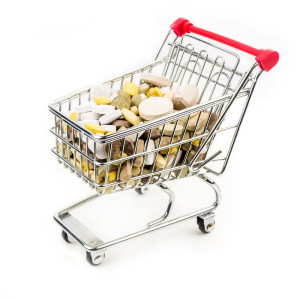 Could the number and order of buying options you present on your sales page have an impact on revenue?
Could the number and order of buying options you present on your sales page have an impact on revenue?
It seems like a minor thing but…
If you take notice, you’ll see that on the sales pages of almost all the natural health products online, there is always more than one option for you to choose to buy?
The options basically come down to the choice of how many supplement bottles do you want to buy. The choices always seem to be between three different options, which is not a coincidence.
Presenting three options gives visitors a frame of reference for the value of each offer.
People like to believe that they rationally analyze all factors first, weigh each choice, then make a decision based on value.
The truth however, is that your perception of the very first offer presented to you lingers in your mind like a faint impression, and this affects how you think about the other choices presented, as well as your decision to buy or not to buy.
William Poundstone, the author Priceless: The Myth of Fair Value says this:
“People tend to be clueless about prices. Contrary to economic theory, we don’t really decide between A and B by consulting our invisible price tags and purchasing the one that yields the higher utility, he says. We make do with guesstimates and a vague recollection of what things are “supposed to cost.”
Price, is simply what a prospect will pay. Though price is just a number it can evoke a complex set of emotions. Depending on the context, the same price may be perceived as a bargain or rip-off.
On the other side of value is perceived value, which is determined by what the product or service is worth in the mind of the consumer. Which is where price really exists. The consumer’s perceived value of a product or service affects the price that he or she is willing to pay for it.
If you understand how the psychology of this works, which is at the core of the Buyer Decision Framework that we apply to all of our optimization thinking, then you can literally guide visitors to choose the exact natural health product option you want them to choose at the precise price that you want them to buy, almost like…
A Jedi Mind Trick
The key is to understand how price impacts the buying decision thought sequence.
But, first and foremost you must always remember that when we optimize anything for greater returns the actual conversion does not happen on your website, it happens in the mind of your visitor. This is where the decision to buy or not to buy is actually made.
In some cases these decisions may happen well before your prospect arrives on your site or they may happen during the very first or subsequent visits. In any case price should be presented only when the value of your product or service has been firmly established in your prospects mind.
It is essential that value must be conceptualized, imagined, and fully appreciated by the visitor prior to revealing the price.
The Order Matters A Lot
This is why you’ll see in any good long form direct marketing sales letter that the price is not reviled until the value of the product has been built up first.
There is no better example of this than a video sales letter (VSL) where the offer and price is not shown until a certain que point in time on the video. It’s only at that point where the offer and price first appears below the video.
You can’t scroll to see the price, all you can do is watch as the value is being built up in the sales pitch video and wait for the moment where the price and buying options are shown.
First Anchor The Price
In a buying scenario where there is more than one option to choose from, people look for the differences between the available options to help them make a decision.
Maybe because it’s still hardwired into our lizard brains from when we evolved, who knows. But for whatever reason, people only focus on the differences they perceive.
The first option they see frames or anchors a price in their mind that they use to judge all other options thereafter.
In the example below the twelve bottle option anchors a high price, making the perception of the six bottle and three bottle options a much better deal when compared to the anchor price.
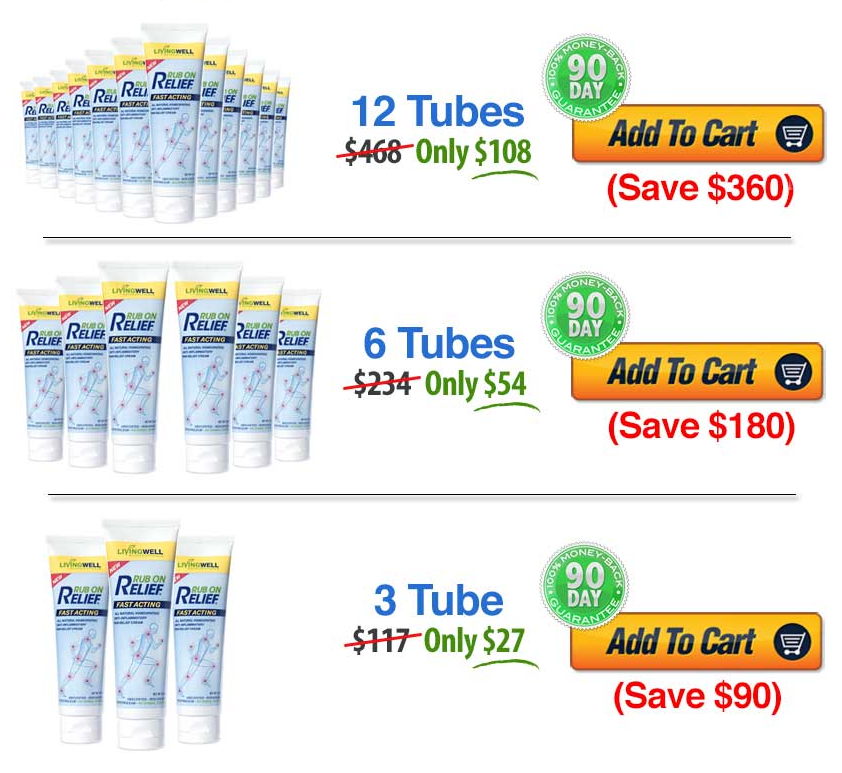
By presenting multiple options, you’re changing the question in the prospects mind from is this a good value to which is the the best value?
But Does Anchoring Really Work? (Let’s Test It)
Let’s put it to the test.
In an anchoring test, for a natural health supplement sales page, we wanted to see the impact of anchoring as it applied to the clients audience.
So, we simply flipped the order of the offer.
In one version we presented the offer from low to high, one bottle, three bottles, six bottles.
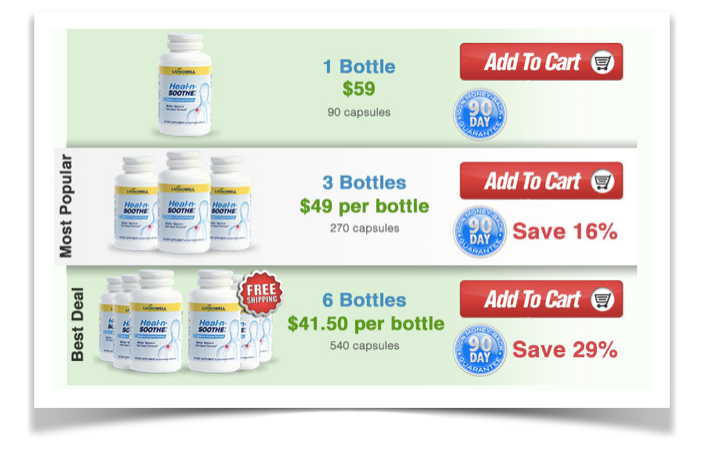
And in an alternative version, we presented the offer in the exact opposite, from high to low, six bottles, three bottles, one bottle.
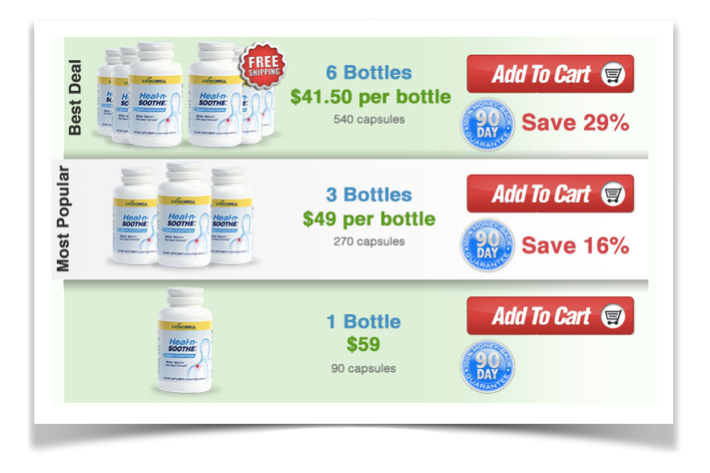
The outcome and impact was pretty interesting.
Framing the offer from highest to lowest six bottles, three bottles, one bottle, performed better in terms of overall revenue and total units sold across both presentation styles.
A 19.75% increase in revenue was gained by anchoring the higher priced six bottle offer first.
Interestingly though the increase in revenue was not from selling more of the six bottle option. Both treatments in this test sold about the same amount of six bottle offers. The almost 20% impact on additional revenue came from pushing people down, not up.
By presenting the higher ticket offer first, that is what’s called anchoring high, 6% more visitors took the one bottle option but, 37% more took the middle, three bottle option, as compared to the treatment where the one bottle offer was presented first.
The higher ticket six bottle option presented first did indeed impact revenue. By framing or anchoring the higher price in their mind, this effected how they judged all other options thereafter. And what they decided to buy. The same exact three bottle option became the better deal as compared to the six, but not as compared to the one bottle option, when anchored first.
But let’s look at the low to high offer a bit deeper.
In the low to high, 1 bottle, 3 bottles, 6 bottles treatment, a greater percentage, exactly half – 50%, of the visitors who bought choose the lowest option of one bottle.
The higher priced three and six bottle options were perceived as much more expensive when compared against the anchor of the lowest priced one bottle option, causing less people to move up from there and shrinking the revenue available from the exact same traffic.
The key insight here is that it’s easier to move people down, than up the price ladder.
This is a perfect example of one of those tests where the conversion rate is the wrong metric. It hides the real impact and maximization of revenue.
In this case, we guided people to buy a certain way to maximize revenue because of what we know about anchoring.
But this is just a basic way to use it, there is another more advanced way to position your offers, and that is by creating a decoy option.
How To Use A Decoy Price Strategy?
A decoy is essentially a lure to attract your ideal prospect. Much like a fishing lure that is used to catch a trout, or a lead magnet that is used to catch an email.
Usually there is only one lure, but in the case of a decoy, there are several options with a decoy among them.
It’s not that the decoy is fake, it’s a real offer, it’s just that you’re intentionally using a decoy to influence a visitor’s behavior when they are choosing between alternatives that are more or less the same.
The way a decoy option works is by giving visitors some context to compare one buying option over another on the same page.
SAAS price pages use context all the time, although they don’t always use a decoy. Simply presenting options does not mean you’re using a decoy.
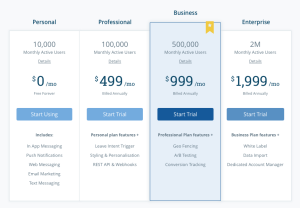
By adding a decoy price option, you can make another option right next to it seem like a better deal. This pushes more people to buy the option you’re leading them towards, whereby making the decision easier for them. Sometimes that option is a more expensive package like a two bottle or three bottle option, or even a free plus shipping trial bottle option with recurring /continuity.
Swaying the purchase decision to the more profitable option increases average order value or profitability or lifetime value or whatever metric you’re optimizing for.
Let’s Look At A Classic Decoy Experiment
The behavioral economist, Dan Ariely, and author of Predictably Irrational, presents a great example of a decoy in his TED talk, Are We In Control Of Our Own Decisions?
In Ariely’s presentation he talks about an old advertising offer from the Economist magazine, where they presented three offers for a subscription to their magazine.
$59 for a Web Only digital option.
$125 for a Print Only option.
$125 for a Print and Web option (you get both the print and digital version).
In a class room experiment test that Ariely conducted for this offer on students where no money was exchanged:
16% chose the Web Only option.
0% chose the print only option, and…
84% chose the print and web combo option.
The $125 print only option was as you guessed, a decoy option to get more people to take the high-priced $125 print and web combo offer.
When the decoy was removed and a new experiment run, 68% took the web only option and only 32% took the print and web combo.
The real insight here lies in the revenue not the conversion rate. The offer with the decoy option, amounted to 42.8% more revenue because of the $125 decoy.
$11,444 predicted revenue vs. $8,012.
The reason is because, the combo option had a much higher perceived value when it’s anchored to the $125 Print Only option and the $59 Web Only option.
Here’s Ariely’s TED talk, scrub ahead to the 12:30 minute mark where he presents the Economist price decoy experiment.
In theory this works, and in Ariely’s case with college students and where no real money is exchanged we can’t dispute the outcome. But does this really work online when people are actually buying a real product with their own real money?
Let’s Take A Look At Some Real Optimization Test Outcomes
In this test we used a price decoy in order to move more buyers up to the higher revenue offer. With any price decoy offer, it’s not just about pricing, you need to also position the offer. In fact the offer is actually where the art comes into play here. Crafting the right offer so as to be appealing enough to sway visitors away from the decoy and to buy.
The key lies in the greater value being offered. Or rather crafting that value, let’s take a look…
In this example there are three supplement offers to choose from, all presented on the same page.
The control offer presents:
6 Bottles for $249.95 (at a 10% Discount + Free Shipping)
3 Bottles for $209.85
1 Bottle for $69.95
The decoy test variation presents:
4 Bottles + 2 Free bottles for $279.80 + Free Shipping
3 Bottles for $209.85
1 Bottle for $69.95
The three bottle option in this version is a decoy, it is designed to move three bottle purchasers up to the highest option (Buy Four Get Two) which is higher price than the six bottle control. It is also positioned as more value against the three bottle option. Not just double the amount of bottles, six vs. three but get two free for just $70 more.
Positioning the value of the offer you want buyers to take, against the decoy option is key to making the decoy work.
What was the outcome of this decoy test in percentage of sales?
40% of the buyers took the one bottle option.
48% took the decoy option, buy four get two.
With only 12% taking the middle three bottle option.
So the decoy in this test was successful in moving people to the higher option. But it actually pushed them outward, both up and down compared to the control.
How did the actual numbers compare against the control in percentage of sales?
Control Percentage of Sales:
6 Bottles – 49.60%
3 Bottles – 36.80%
1 Bottle – 13.60%
Test Treatment Percentage of Sales:
4 Bottles + 2 Free – 48%
3 Bottles – 12%
1 Bottle – 40%
The revenue opportunity was hidden in the three bottle option. Without the decoy, the middle three bottle option, which is where most buyers gravitate, was taking a good 36% of the sales. The decoy uncovered more revenue just by restructuring the offer.
There is more work to be done here however. The effect of pushing people down to the one bottle option does not make this a total landslide winner in terms of profit, which is a key component in revenue optimization for health companies.
What Can You Apply To Increase Your Revenue?
When it comes to maximizing revenue, the order of each element, including the value, the offer, and the price, all matter a great deal. It’s the expression and timing of those elements where you’ll gain the most bang for your buck. But one and done is not the path to revenue maximization.
An interactive approach will beat any implementation any day because even though health marketers may be passionate about health and know a ton about it, they are not their audience, even if they think they are.
Each of us has our own biases on top of anchors and decoys. Yes they will work. But to truly get the maximum increase you have to be humble. You have to admit not everyone thinks the way you do. Not everyone has the same trust threshold or the same inner beliefs as you do, and this is why you need to split test and measure to maximize profits over the long term.
Discover the 3 funnels that can help your health supplement business succeed.
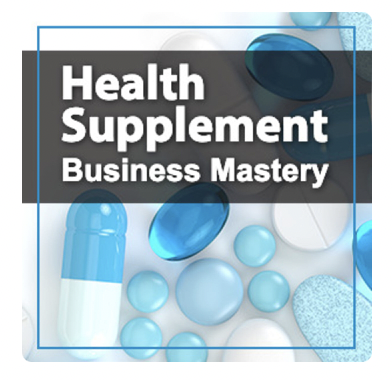
Listen to the Health Supplement Business Mastery Podcast for for dietary supplement entrepreneurs and marketers.
